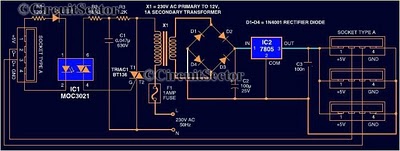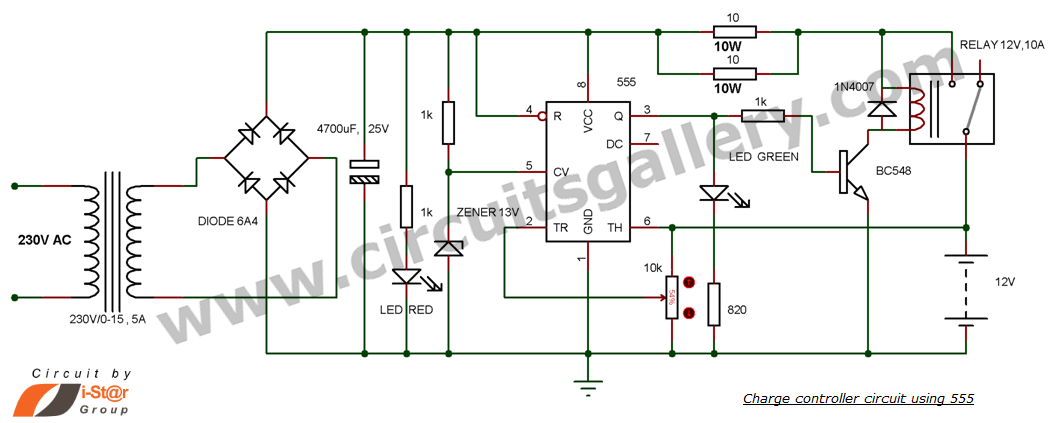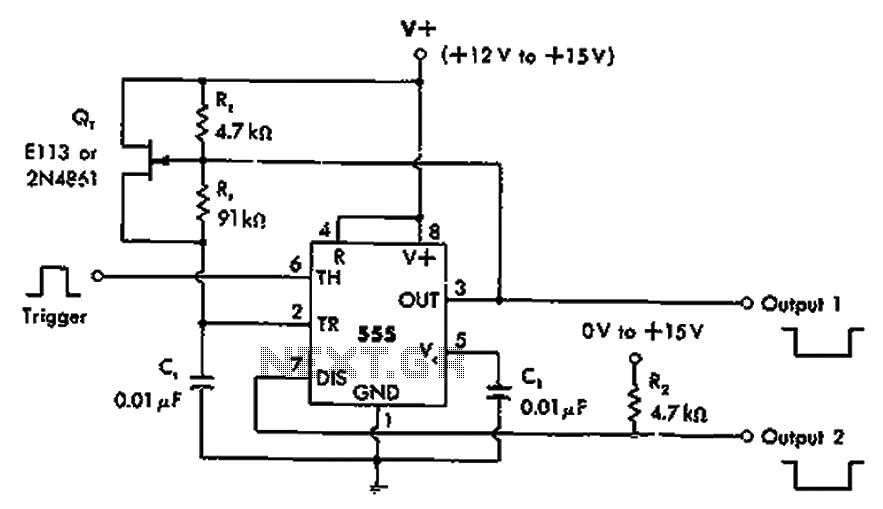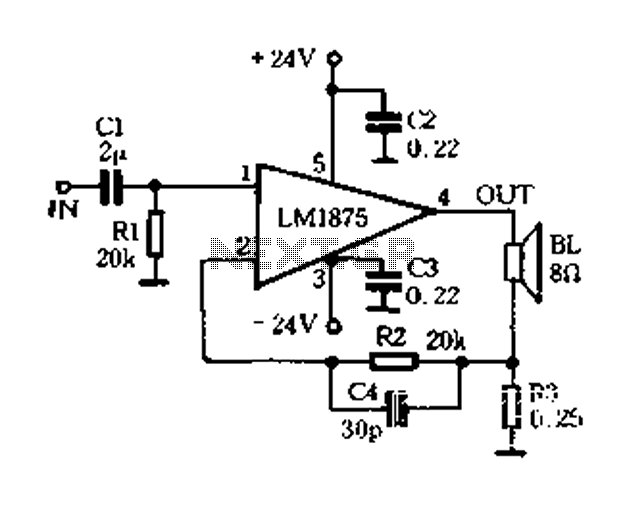
White LED Flood Lamp circuit
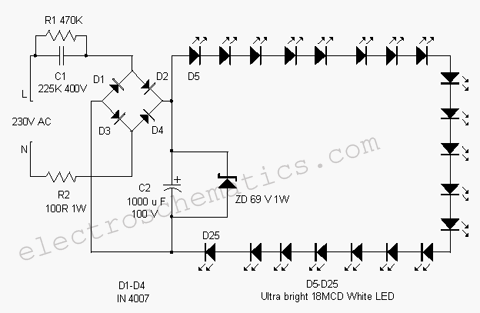
This white LED light illuminates the porch with cool white light. The circuit features a simple and energy-saving design. Its current consumption is practical.
The white LED light circuit is designed to provide efficient illumination while minimizing energy usage. The primary component is a white LED, which operates at a forward voltage typically ranging from 2.8V to 3.6V, depending on the specific LED used. This LED is connected in series with a current-limiting resistor to ensure that it operates within its safe current rating, usually around 20 mA for standard LEDs.
The energy-saving aspect of the design can be attributed to the use of a low-power LED, which converts a higher percentage of electrical energy into light rather than heat, in contrast to traditional incandescent bulbs. The circuit can be powered by a standard DC power supply or battery, making it versatile for various applications.
For outdoor use, the circuit may also include a waterproof housing to protect the LED from environmental factors. Additionally, if the design is intended for automatic operation, a light sensor or a timer circuit can be integrated to control the LED based on ambient light levels or time of day.
Overall, this simple LED circuit is an effective solution for porch lighting, combining functionality with energy efficiency.This White LED lights illuminates your porch with cool white light. The circuit is too simple and energy saving design. Its current consumption is practica. 🔗 External reference
The white LED light circuit is designed to provide efficient illumination while minimizing energy usage. The primary component is a white LED, which operates at a forward voltage typically ranging from 2.8V to 3.6V, depending on the specific LED used. This LED is connected in series with a current-limiting resistor to ensure that it operates within its safe current rating, usually around 20 mA for standard LEDs.
The energy-saving aspect of the design can be attributed to the use of a low-power LED, which converts a higher percentage of electrical energy into light rather than heat, in contrast to traditional incandescent bulbs. The circuit can be powered by a standard DC power supply or battery, making it versatile for various applications.
For outdoor use, the circuit may also include a waterproof housing to protect the LED from environmental factors. Additionally, if the design is intended for automatic operation, a light sensor or a timer circuit can be integrated to control the LED based on ambient light levels or time of day.
Overall, this simple LED circuit is an effective solution for porch lighting, combining functionality with energy efficiency.This White LED lights illuminates your porch with cool white light. The circuit is too simple and energy saving design. Its current consumption is practica. 🔗 External reference
